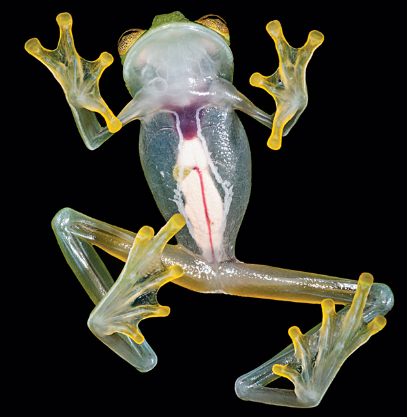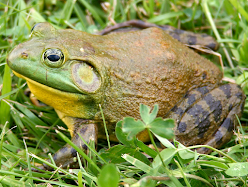Frogs are fascinating creatures with many interesting characteristics. Here are several amazing and interesting facts about frogs:
1. Skin for Respiration and water intake:
Frogs don't just breathe through their lungs; they also absorb oxygen through their skin. This ability allows them to respire even when they are submerged in water.
Frogs do not typically drink water in the way that humans or some other animals do. They can absorb water and moisture through their skin.
2. Jumping Power:
Frogs are incredible jumpers. Some species can leap up to 20 times their body length in a single jump, thanks to their strong leg muscles.
3. Tongue Projection:
Frogs have a unique and lightning-fast tongue projection mechanism. They use it to catch insects and other prey. Their tongues are attached at the front of their mouths, and they can flick them out to catch prey in the blink of an eye.
4. Hibernation:
Many frog species hibernate during the winter months. They bury themselves in mud or find other sheltered spots to survive the cold.
5. Toxic Skin:
Some frogs, like the poison dart frogs found in Central and South America, have toxic skin secretions. Indigenous people have used these toxins to poison the tips of blowdarts for hunting.
 |
| A poison dart frog |
6. Tadpole Transformation:
Frogs undergo a remarkable metamorphosis. They start as tadpoles, which are essentially fish-like creatures with gills, and eventually develop into adult frogs with lungs and legs.
7. Camouflage:
Many frog species have evolved camouflage as a defense mechanism. They can change the color of their skin to blend in with their surroundings, helping them hide from predators.
8. Eyes:
Frogs have some of the largest eyes relative to their body size among all vertebrates. Their bulging eyes provide them with a wide field of vision.
9. Vocal Abilities:
Frogs are known for their diverse range of vocalizations. Each species has its own unique call, which they use for communication, especially during mating season.
 |
| A male frog with vocal sac |
10. Conservation:
Frogs are facing significant threats due to habitat loss, pollution, climate change, and a fungal disease called chytridiomycosis. Many frog species are endangered or critically endangered, making them a focus of conservation efforts.
These facts highlight the remarkable adaptations and behaviors of frogs, which contribute to their important role in ecosystems around the world.
Types of Frogs
There are thousands of frog species around the world, and each has its own unique characteristics and adaptations. Here are some different types of amazing frogs from various parts of the world:
1. Poison Dart Frogs:
These small, brightly colored frogs from Central and South America are known for their potent skin toxins, which indigenous people used to poison blowdart tips.
2. Tree Frogs:
Tree frogs are known for their adhesive toe pads that allow them to climb and cling to vegetation. The iconic red-eyed tree frog is a well-known example.
3. Glass Frogs:
These frogs have translucent bellies, allowing you to see their internal organs. They are mostly found in Central and South America.
4. Horned Frogs:
Horned frogs, also known as Pac-Man frogs due to their mouth shape, are squat and stocky. They are often found in South America and can consume prey as large as themselves.
5. Burrowing Frogs:
These frogs have adaptations for a burrowing lifestyle. They are typically found in sandy or loose soil habitats.
6. Aquatic Frogs:
Aquatic frogs, like the African clawed frog, are adapted to living in water. They have webbed feet and are excellent swimmers.
7. Bullfrogs:
The American bullfrog is one of the largest frog species in North America. They have a deep, resonant call and are known for their powerful jumps.
8. Glass Frogs:
These frogs have translucent skin, which makes their internal organs visible. They are found in Central and South America.
9. Darwin's Frog:
Named after Charles Darwin, these frogs have a unique breeding strategy. The males carry the fertilized eggs in their vocal sacs until they hatch into tiny froglets.
10. Cave Frogs:
Cave-dwelling frogs have adapted to live in dark and damp environments. Some species are entirely blind due to their subterranean lifestyle.
11. Gliding Frogs:
Certain frogs have large webbed feet and skin flaps that allow them to glide from tree to tree in the rainforests of Southeast Asia.
12. Marsupial Frogs:
Found in South and Central America, marsupial frogs carry their eggs in pouches on their backs, similar to marsupial mammals.
13. Harlequin Toads:
These frogs are known for their striking black and red or yellow coloration. They are found in Central and South America.
14. African Clawed Frog:
This aquatic frog is known for its unusual reproductive habits, which involve egg fertilization outside the female's body.
15. Microhylid Frogs:
Microhylid frogs are known for their small size and wide distribution, with species found in various parts of the world.



















